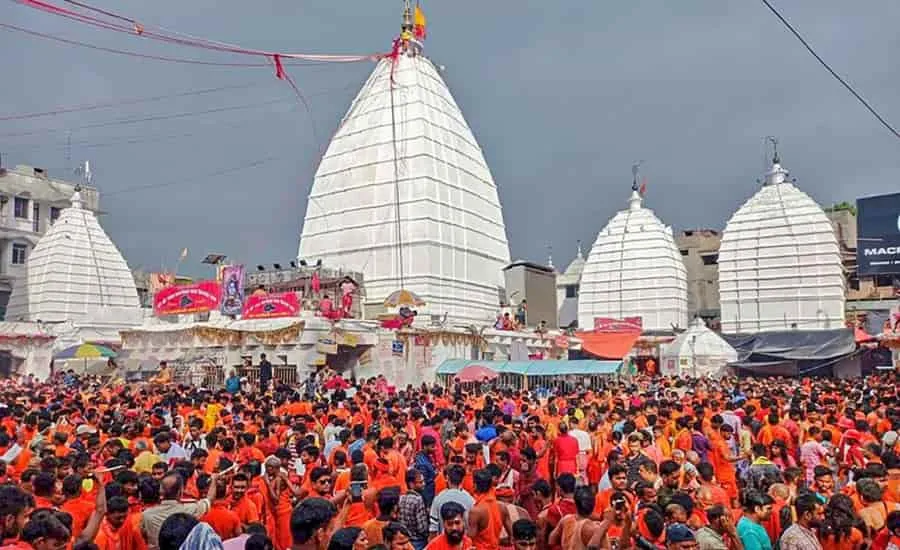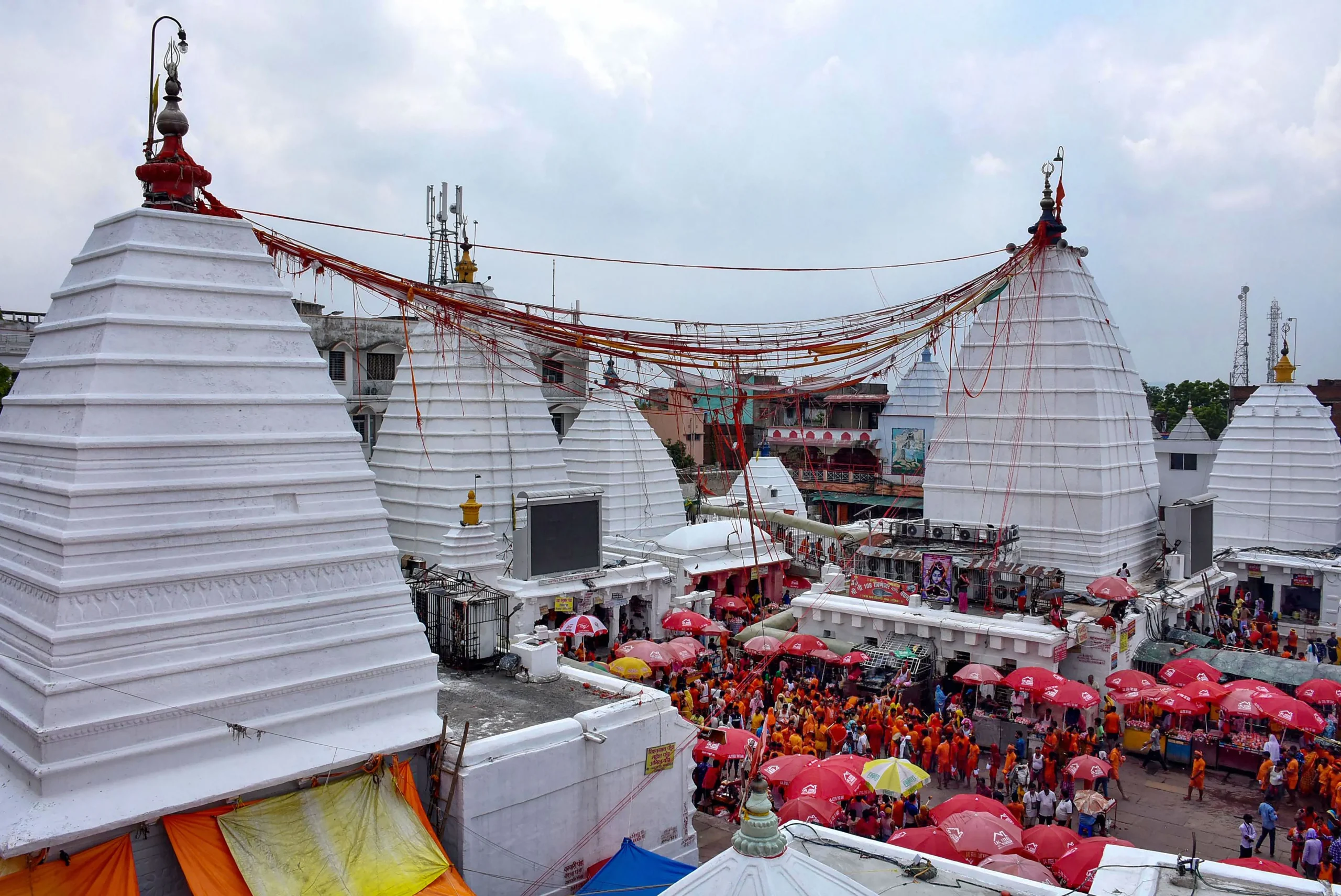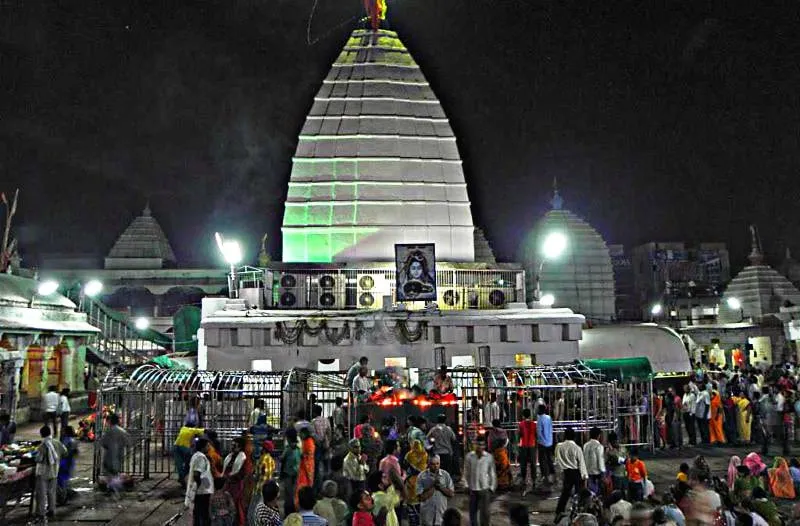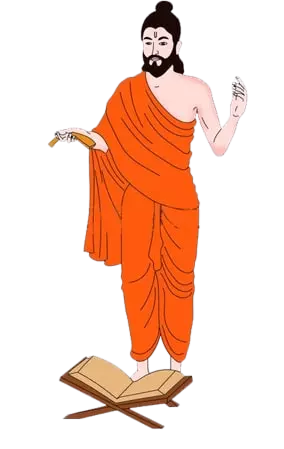Pandit for Birthday Puja in Germany: Cost, Vidhi & Benefits
Birthday Puja in Germany: In Hindu tradition, a birthday puja is also known as Janamdin puja. It is not just…
 0%
0%

Baba Baidyanath Temple is located in the city of Deoghar of State Jharkhand. The Baidyanath temple is also known as Baijnath Dham and Vaidyanath Jyotirlinga. Baidyanath temple is one of the jyotirlingas in India which is considered the very auspicious abode of Lord Shiva.

The expansive and gorgeous temple complex, which is situated in the Deoghar division of the state of Jharkhand, includes twenty-one additional noteworthy and stunning temples in addition to the primary Baba Baidyanath temple, where the Jyotirlinga is located.
During the annual Shravan mela, millions of devotees attend the Baba Baidyanath Dham Temple. That is extremely amazing because they travel 108 kilometres to bring water to the shrine from the Ganges River in Sultanganj. The devotees are said to form a continuous line that covers the entire 108 kilometres!
Do you have the information that among 12 Jyotirlingas in India, baba baidyanath temple is the 9th jyotirlinga in India? And this holy place is crowded by the tourist people who visit the Baijnath Temple, especially in Shravani Mela.
When you are going to take the darshan of Baidyanath temple, before that you should know about the timings of Vaidyanath jyotirlinga. The timing for baba baidyanath darshan starts at 4:00 AM. The time for devotees’ darshan starts from 4:00 AM to 5:30 AM when sarkari puja is performed.
The temple closes at 3:30 PM when the puja ceremonies have concluded.
Afterwards, at 6:00 PM, the temple opens to the general public, and worship resumes. The Shringar Puja takes place at this time. By 9:00 PM, the temple finally locks its doors.
| Days | Parts of the Day | Temple Darshan Timings/Schedule |
| Mon to Sun | Temple Opening Time | 04:00 |
| Mon to Sun | Morning Hours | 04:00 to 15:30 |
| Mon to Sun | Evening Hours | 18:00 to 21:00 |
| Mon to Sun | Temple Remains Closed | 15:30 to 18:00 |
It’s worth reading an ancient tale that relates to the beginnings of this temple. To convince Mahadeva (Lord Shiva) to stay there permanently, Ravana, the King of Lanka, felt that his capital would be unfinished and constantly threatened by foes until that time. As a result, he prayed to the Lord constantly.
Satisfied, Shiva permitted Ravana to bring his “Atmalinga ” to Lanka, with the caveat that neither the journey to Lanka nor the lingham’s possession by anyone else should be interrupted. In such a case, the lingam would be permanently fixed in the location where it was deposited.
When they understood that if Shiva travelled to Lanka with Ravana, Ravana’s terrible activities would pose a threat to the entire universe, the other gods opposed this idea. As a result, they asked the God of Water, Varuna, to pass through Ravana’s stomach on his way back.
Ravana gave the lingam to a Brahmin who was Lord Ganesha after the Lord caused him to experience a strong yearning to release water. At this spot, today called Baidyanath Dham, the Brahmin erected the lingam.
Ravana exerted a lot of effort to take the lingam out of its original location. He was angry at his inability to do so and retaliated violently, damaging the lingam in the process. Then, because of his shame, he returned to the location every day for the rest of the time.
The location of Lord Shiva’s Earthly descent is known as Harilajori, and it is around four kilometres from Baidyanath. Deoghar is the location where the lingam is maintained, and its name is Baidyanath Jyotirlingam.
According to religious doctrine, Vishwakarma, the architect of Gods, constructed the Shiva temple. The major temple, the centre of this main temple, and the entrance to the temple are the three distinct elements of the complex.
This 72-foot-tall lotus-shaped building faces east. The Maharaja of Gidhaur, Raja Puran Singh, gave three ascending-shaped gold pots for the top, which are shown there. In addition to these containers, “Panchkula,” an eight-petaled lotus jewel known as Chandrakanta Mani, and a set of five blades in the shape of a trident exist.

The big slab’s centre lingam, which has a diameter of around 5 inches, protrudes by about 4 inches. The top of this lingham is broken off. The ultimate Lord Shiva Temple is one of many temples in the courtyard dedicated to various gods and goddesses.
The shrines honour Lakshminarayan, Maa Parvathi, Maa Kali, Maa Jagat Janani, and Kala Bhairava and are constructed in both contemporary and traditional architectural styles. The priests string red sacred threads from the main temple to the Maa Parvati temple. It is important to note this distinctive quality since it represents the union of Shiva and Shakti.
Rail: At Deogarh, Jharkhand, Baidyanath Dham is close to the Jasidih railway station. This railway station directly connects to Baidyanath Dham railway station and is part of the main Howrah-Patna-Delhi rail line.
Bus: Regular passenger buses run from major surrounding cities like Ranchi, Kolkata, Jamshedpur, Bhagalpur, and Patna to Baidyanath Dham Temple.
Route: The GT Road, which connects Kolkata and Delhi, is close to the Baidyanath Dham Temple. The top three ways to get to Baba Dham are: Baba Baidyanath Dham to Patna (Deoghar-Jasidih-Chakai-Koderma-Nawada-Bihar Sharif-Bakhtiyarpur-Patna)
(Deoghar-Sarath-Madhupur-Giridih-Dhanbad-Chas-Bokaro-Ramgarh-Ranchi) Badiyanath Dham to Ranchi; Baba Dham to Kolkata (Deoghar-Sarath-Chitra-Jamtara-Chittaranjan-Asansol-Durgapur-Kolkata)
There are 21 other temples in addition to Baba Baidyanath’s main temple. Shrines for Parvati, Ganesha, Brahma, Kalabhairav, Hanuman, Saraswati, Surya, Ram-Lakshman-Janaki, Ganga, Kali, Annapurna, and Lakshmi-Narayan are just a few of the deities you may find here. Red sacred threads connect the Shiva temple and the Maa Parvati temple.

In the pyramidal tower of the main shrine, you can find three compactly placed gold containers. Raja Puran Singh, the Maharaja of Giddhaur, gave these as a gift. Furthermore, five trident-shaped knives (Panchkula) and a Chandrakanta Mani, an eight-petaled lotus jewel, exist.
In front of the Lord is a large Nandi, Lord Shiva’s mount.
The main temple at Baba Baidyanath temple and Baijnath Dham is significant since it predates historical time. During Rama’s time as Ayodhya’s monarch, devotees have been coming there. Raja Puran Singh, the Maharaja of Gidhaur, donated three compactly placed ascending-shaped gold pots for the summit.
A “PUNCHSULA” (five knives in the shape of a trident), which is uncommon, is also present in these pitcher-shaped containers. The lingam is a big slab of basalt that has a cylindrical shape with a diameter of about 5 inches and extends about 4 inches from the centre.
Devotees hold the Jyotirlinga in particular esteem because they believe that Shiva initially transformed into one on the night of the Ardra Nakshatra. The jyotirlinga represents the supreme partless reality.
Legend has it that Shiva originally appeared as a Jyotirlinga on the eve of the Aridra Nakshatra, which explains the Jyotirlinga’s special status in Hinduism. The same shrine of Vaidyanath holds the distinction of being one of 51 Shakti Peethas. This is where the “heart” of Sati (goddess) fell after Dakshayani (Sati) was severed from her body. Shiva, love-lorn and distraught, carried her heart to this location. The Sudarshana Chakra of Lord Vishnu built the respective temple on this spot.
This area is also known as Hardapeetha because this is where Sati’s heart broke. In this place, people worship Lord Bhairav as Vaidyanath or Baidyanath, and they worship Sati as Jai Durga (Victorious Durga). As the daughter of Himavat, king of the mountains, and his wife, the Devi Mena, Dakshayani was reborn as Parvati.
As we all know that Baidyanath temple is located in Deoghar, Jharkhand. Deoghar literally means the house of God, also known as the abode of God. Its other names are Baijnath dham, baba dham, and deoghar temple.
The Baba Baidyanath Temple in the ancient Sanskrit scriptures also has the names Ketaki Van and Haritaki Van. The Matsya Purana also narrates about Baba Baijnath Dham, the sacred place where Shakti resides and Lord Shiva assists the devotees in finding relief from incurable diseases. Furthermore, if you want to learn more about Baba Baidyanath Temple feel free to contact 99Pandit.
The origination of its name is not mentioned in any of the hindu ancient scripts, this is just called Baijnath dham and Vaidyanath Jyotirlinga after the construction of the Baidyanath temple and after some time it is referred to as Deoghar or Baijnath deoghar.
Q. How to reach Baba Baidyanath Temple by Rail?
A.At Deogarh, Jharkhand, Baidyanath Dham is close to the Jasidih railway station. This railway station is directly connected to Baidyanath Dham railway station and is part of the main Howrah-Patna-Delhi rail line.
Q. What are the other names of the Baidyanath Temple called by?
A.The origination of its name is not mentioned in any of the hindu ancient scripts, this is just called Baijnath Dham and Vaidyanath jyotirlinga after the construction of the Baidyanath temple and after some time it is referred to as Deoghar or Baijnath deoghar.
Q. What is the timing for the Baidyanath Temple?
A.The time for devotees’ darshan starts from 4:00 AM to 5:30 AM when sarkari puja is performed. The temple closes at 3:30 PM when the puja ceremonies have concluded. Afterwards, at 6:00 PM, the temple opens to the general public, and worship resumes. The Shringar Puja takes place at this time. By 9:00 PM, the temple finally locks its doors.
Q. Are there other places to visit in Baidyanath Temple deoghar?
A. There are 21 other Temples in addition to Baba Baidyanath’s main Temple. Shrines for Parvati, Ganesha, Brahma, Kalabhairav, Hanuman, Saraswati, Surya, Ram-Lakshman-Janaki, Ganga, Kali, Annapurna, and Lakshmi-Narayan are just a few of the deities you may find here.
Q. How much is the distance from Sultanganj to deoghar Baijnath Dham?
A. During the annual Shravan mela, millions of devotees attend the Baba Baidyanath Dham Temple. That is extremely amazing because they travel 108 kilometres to bring water to the shrine from the Ganges River in Sultanganj.

100% FREE CALL TO DECIDE DATE(MUHURAT)

Table Of Content
Filters by categories
All Pujas
Puja On Special Events
Upcoming Pujas
Dosha Nivaran Pujas
Mukti Karmas
Filters by Trending Topics
Filters by Regions
North Indian Pujas
South Indian Pujas